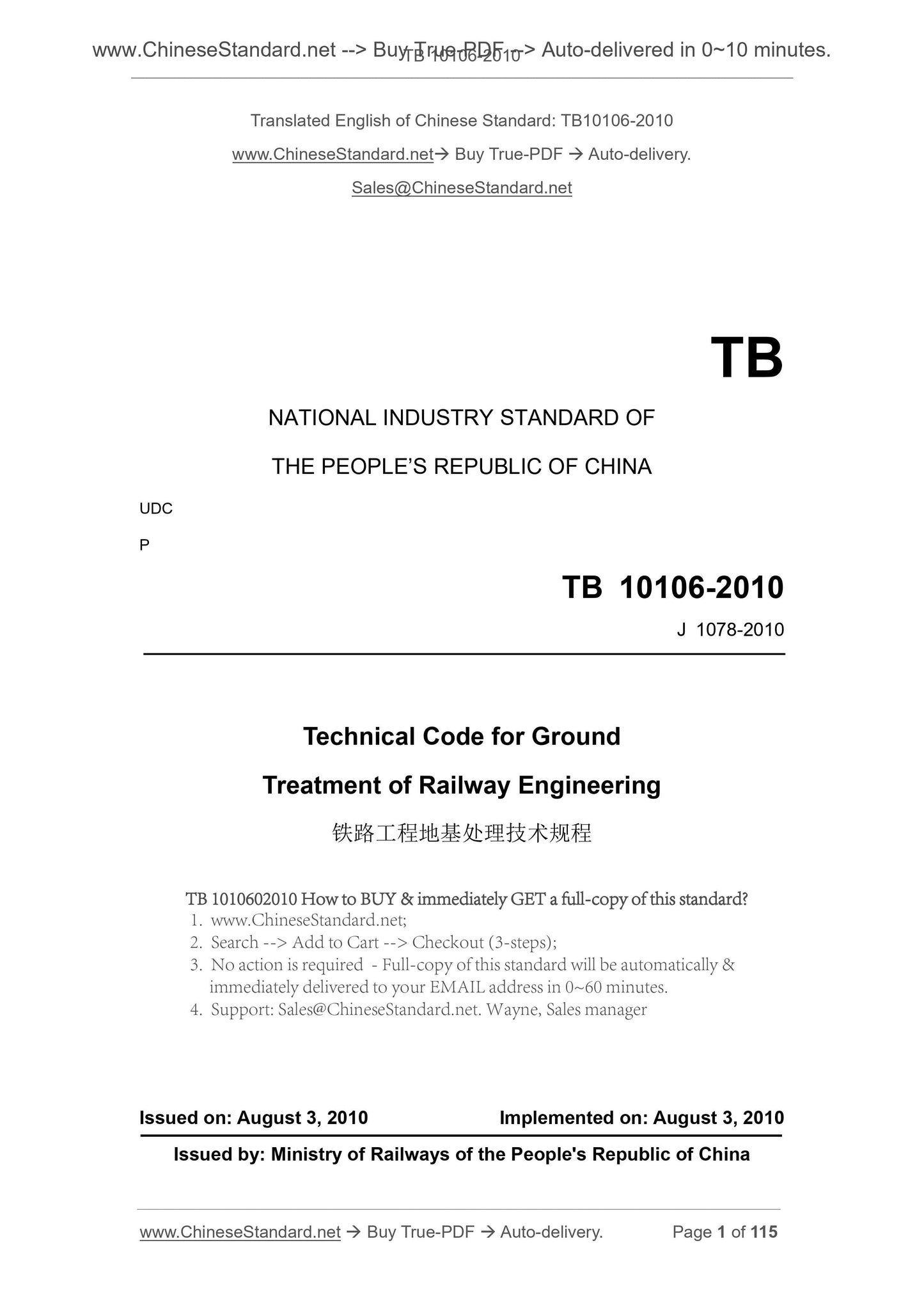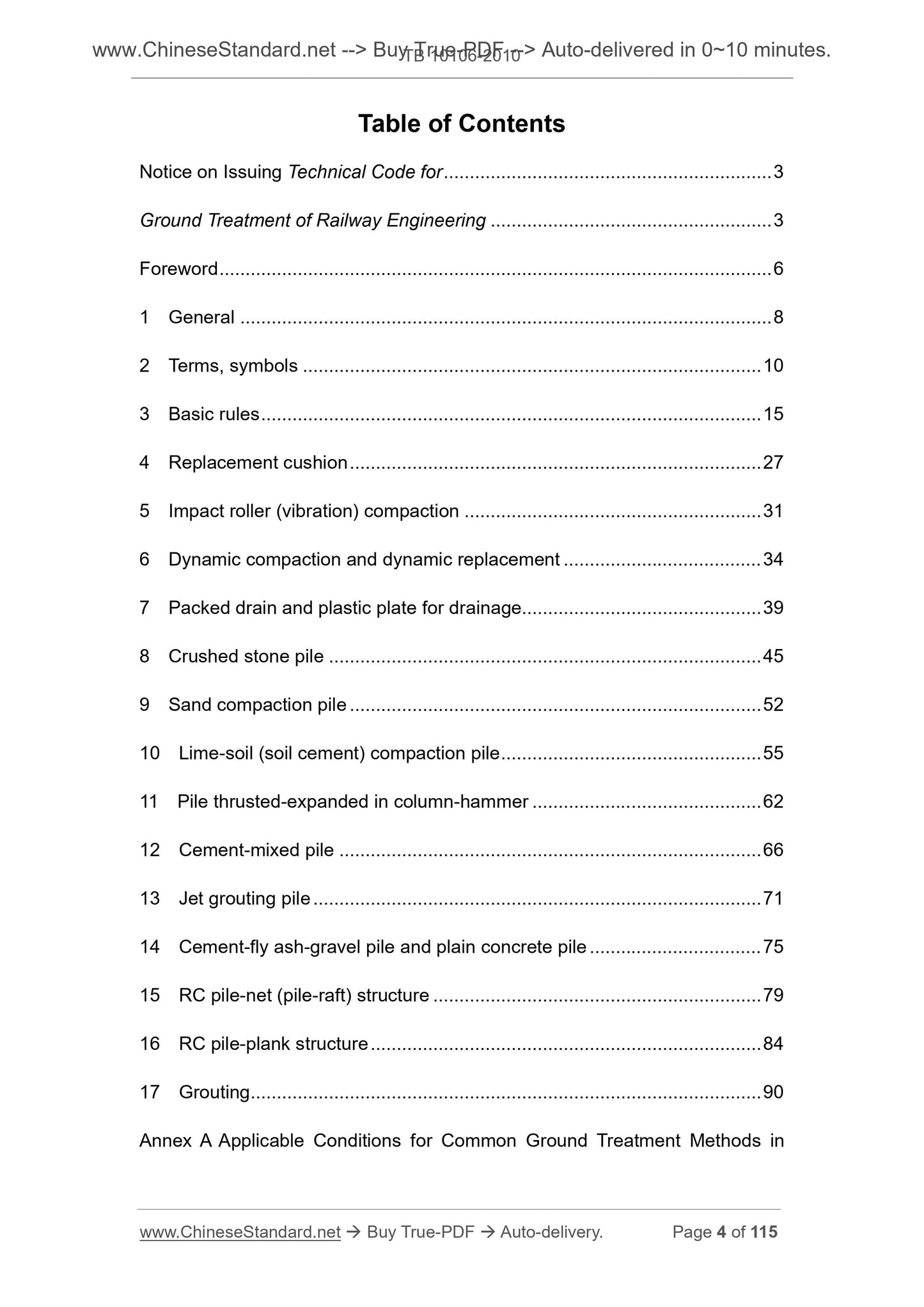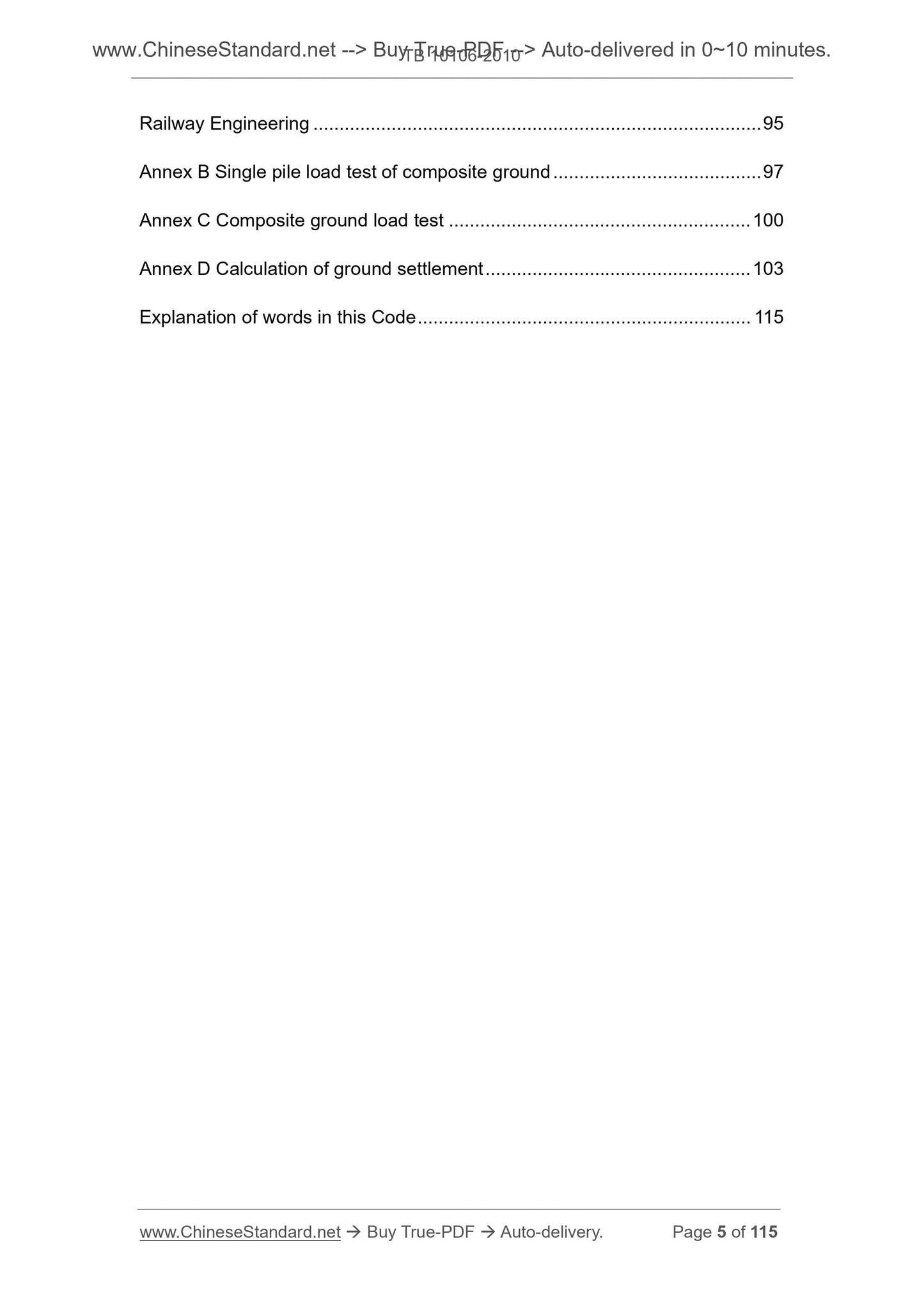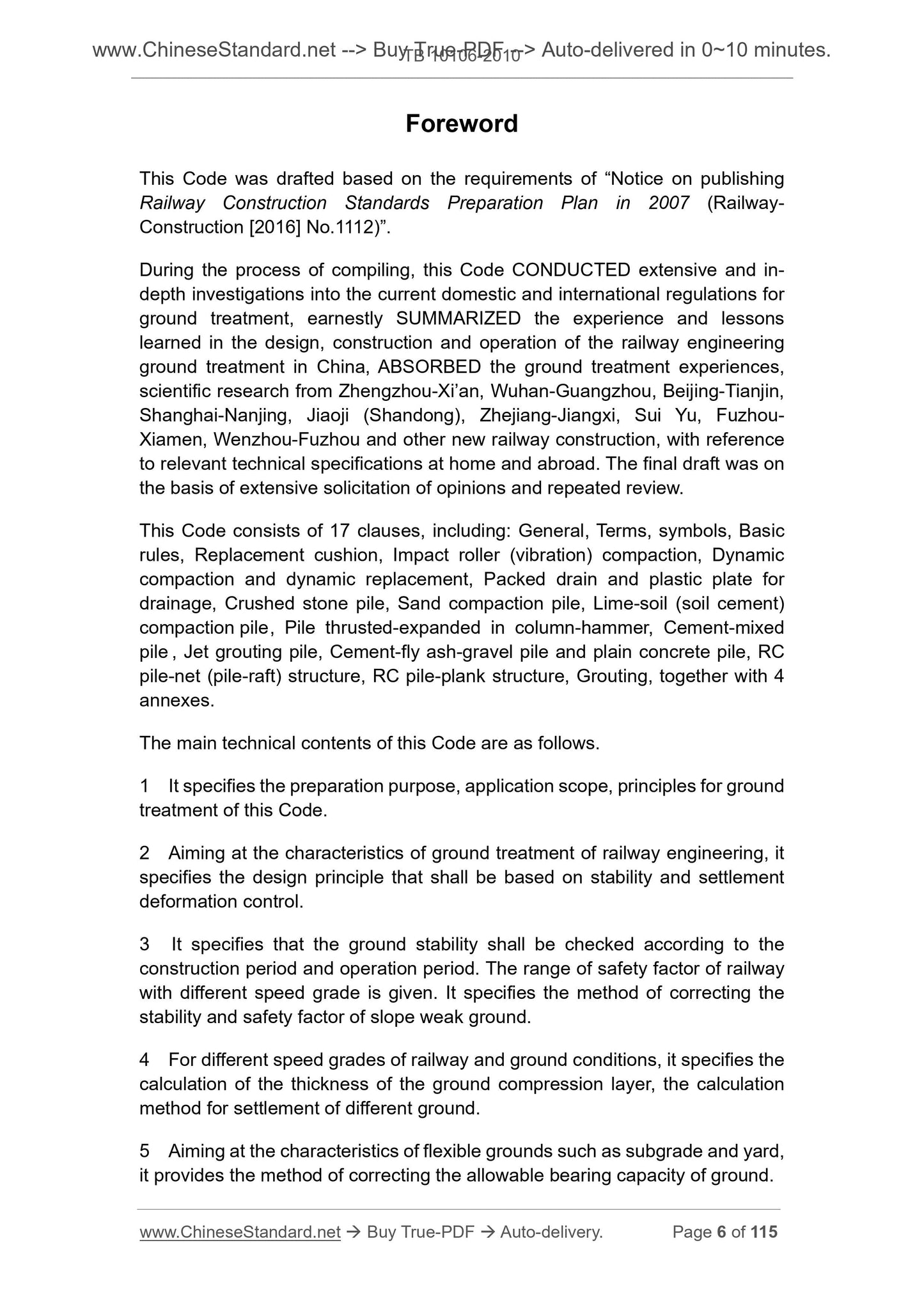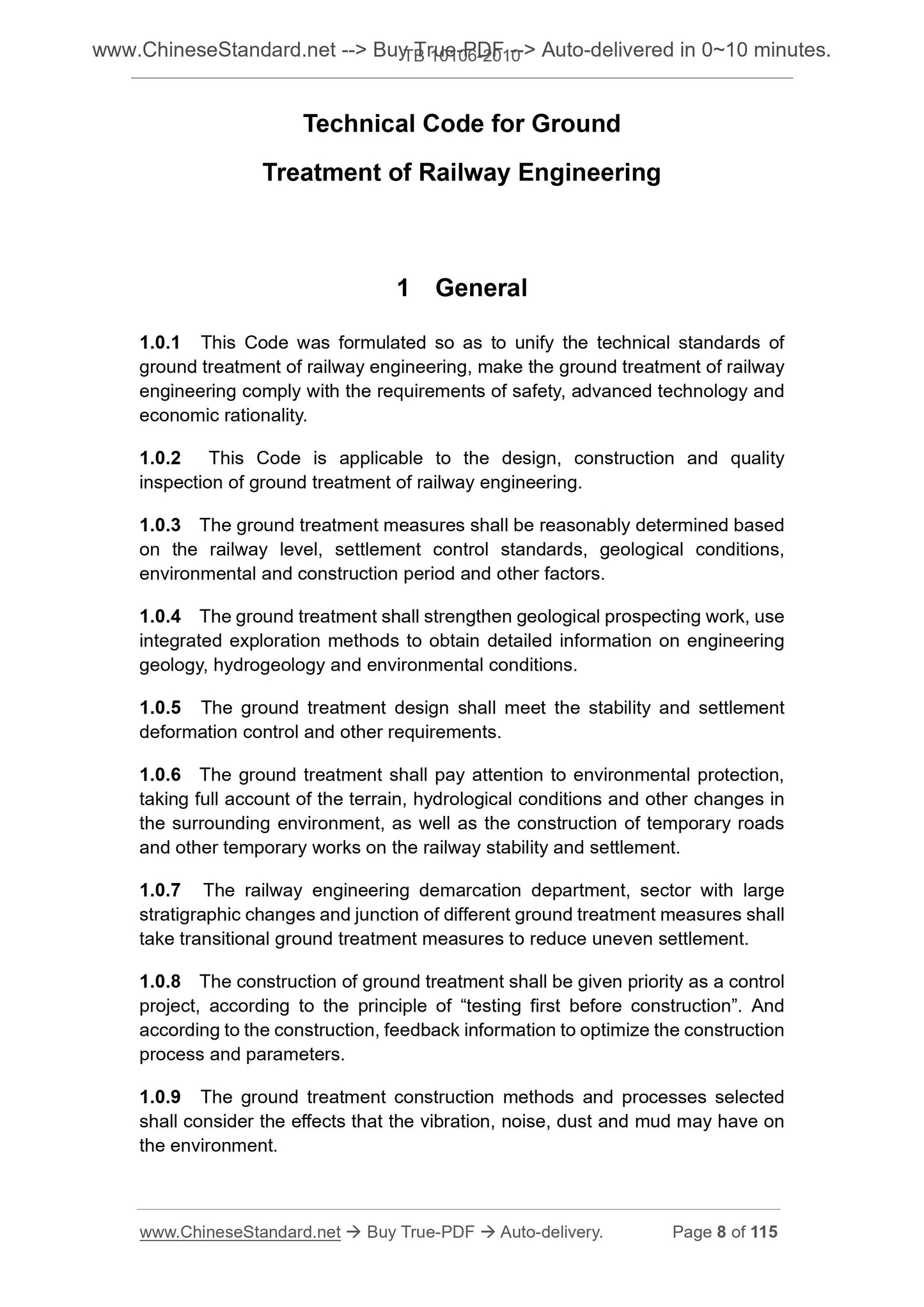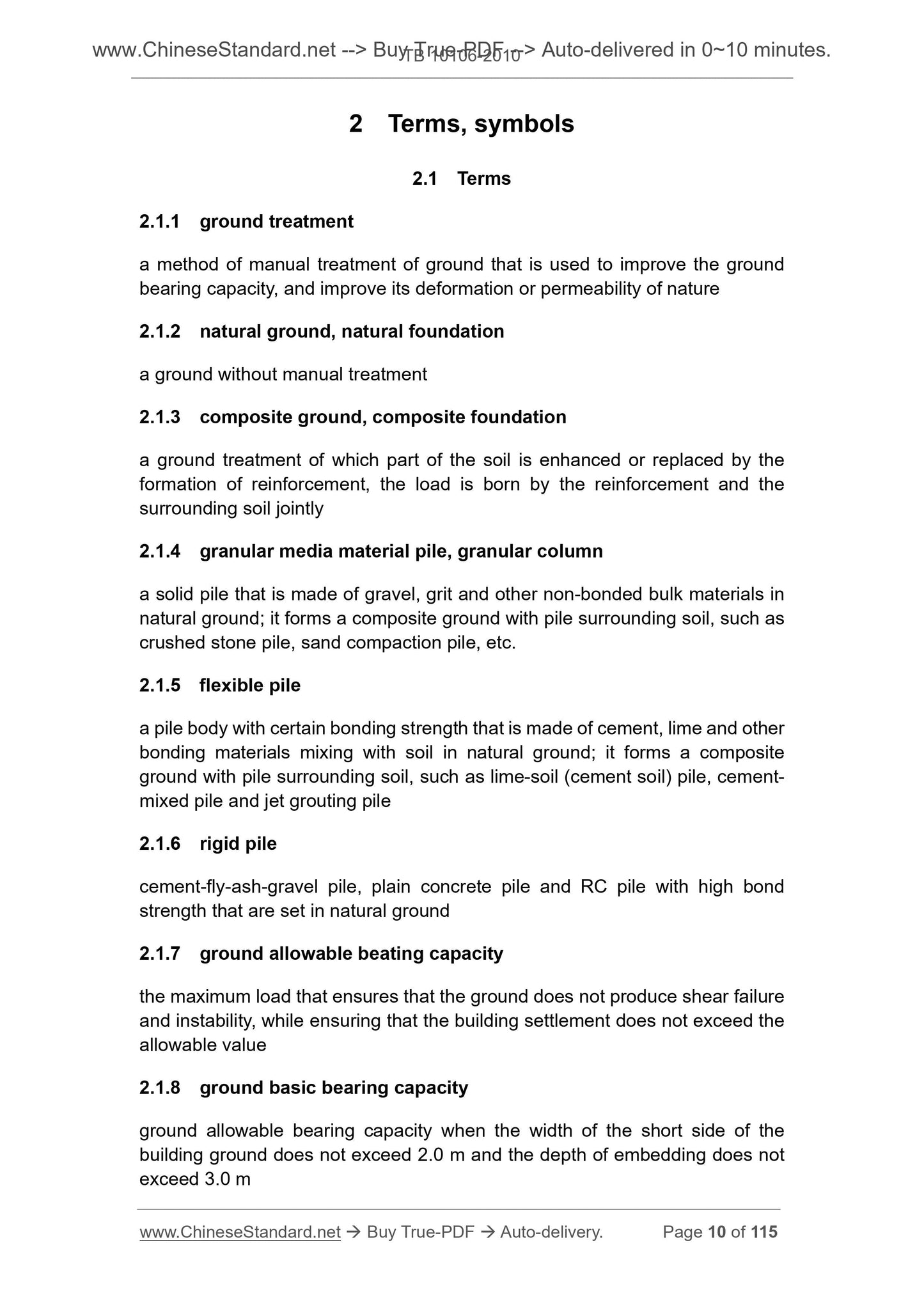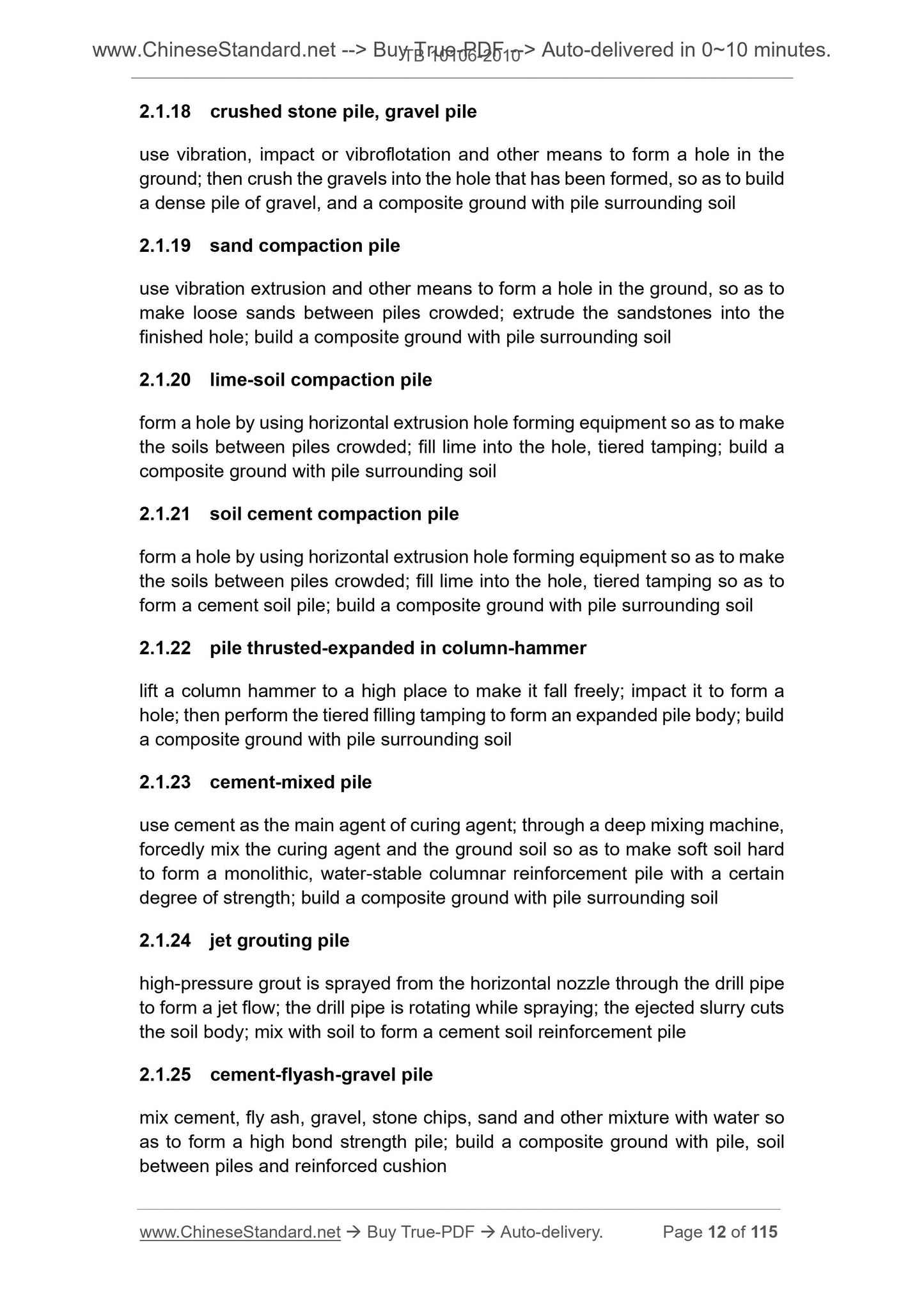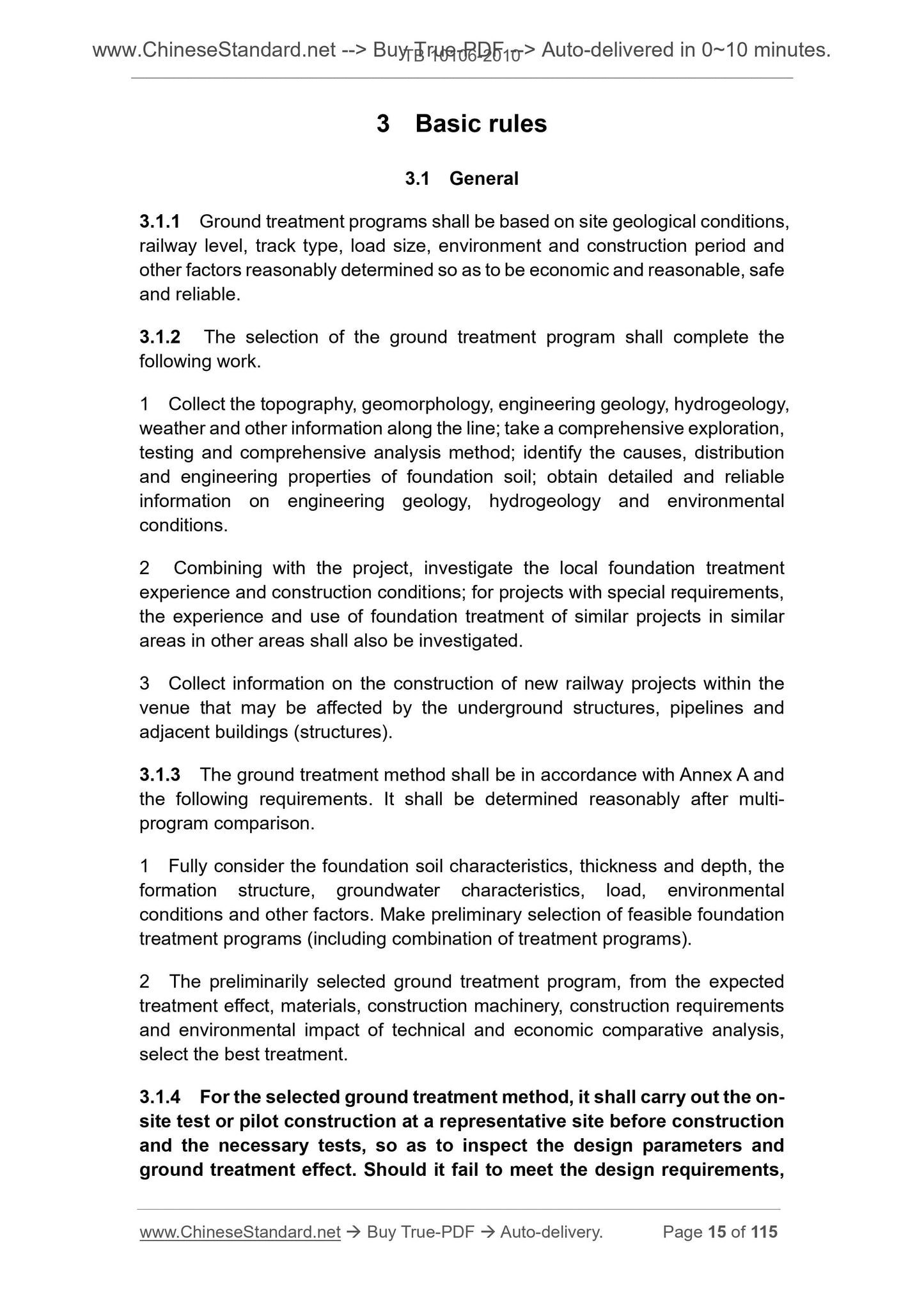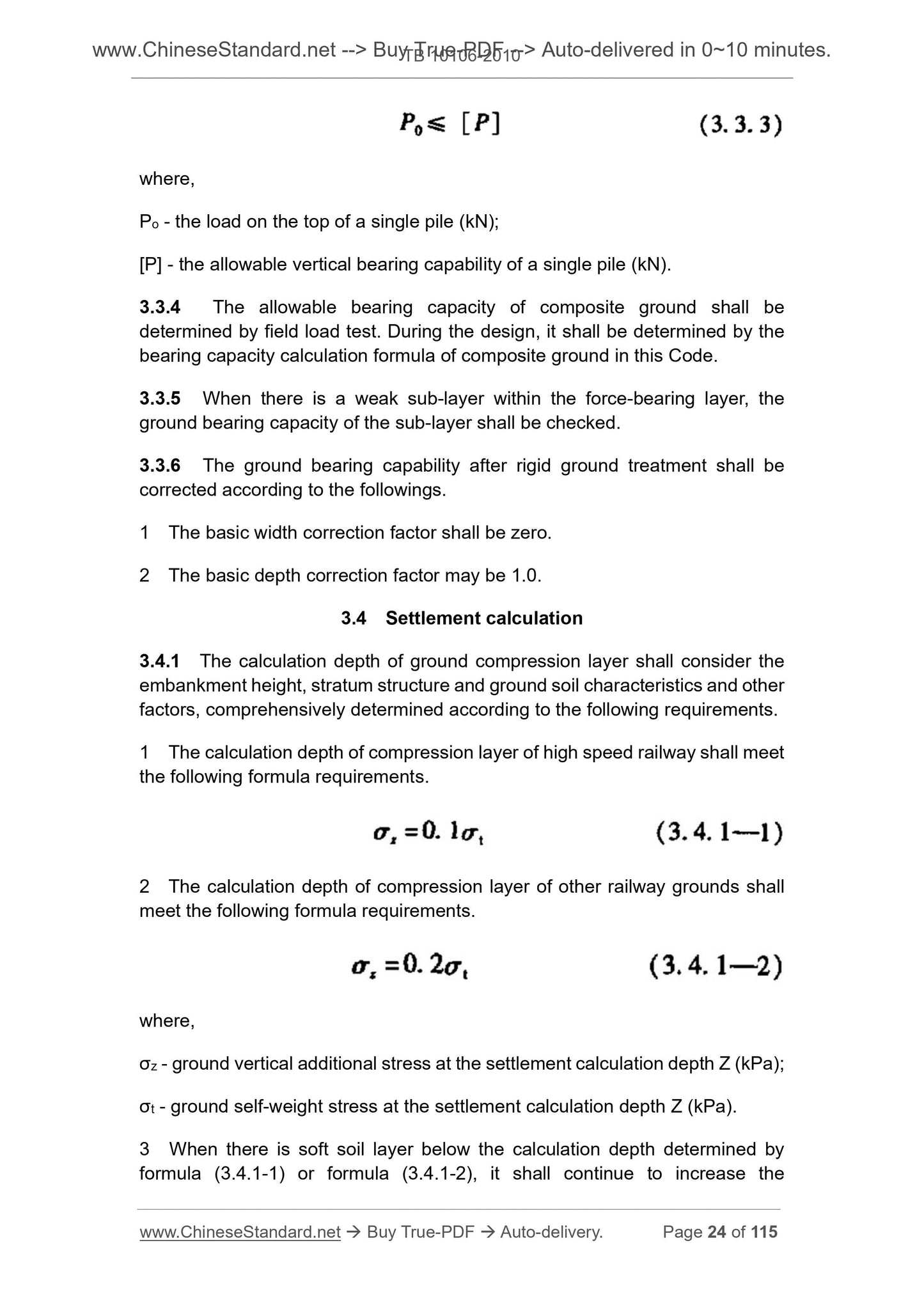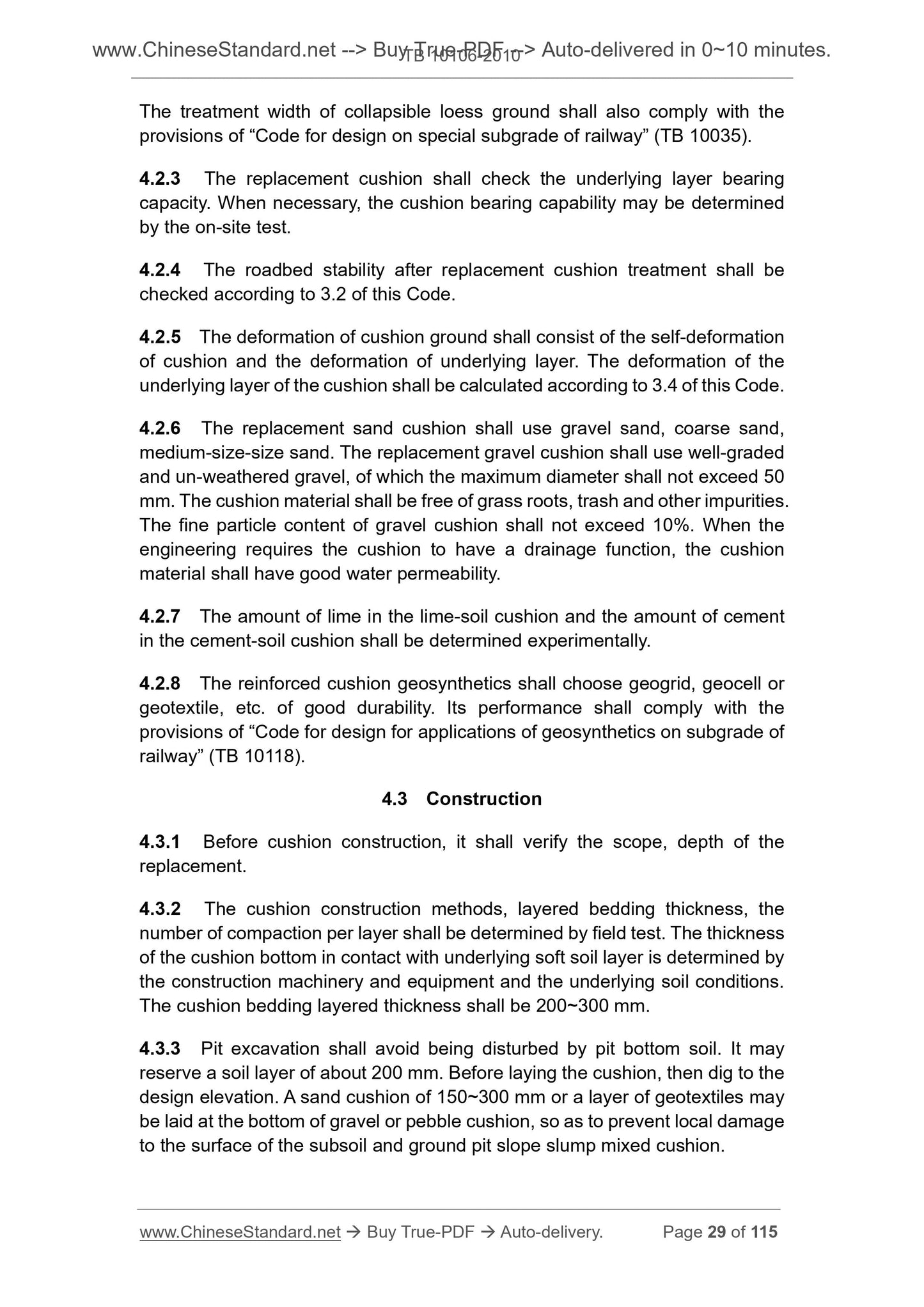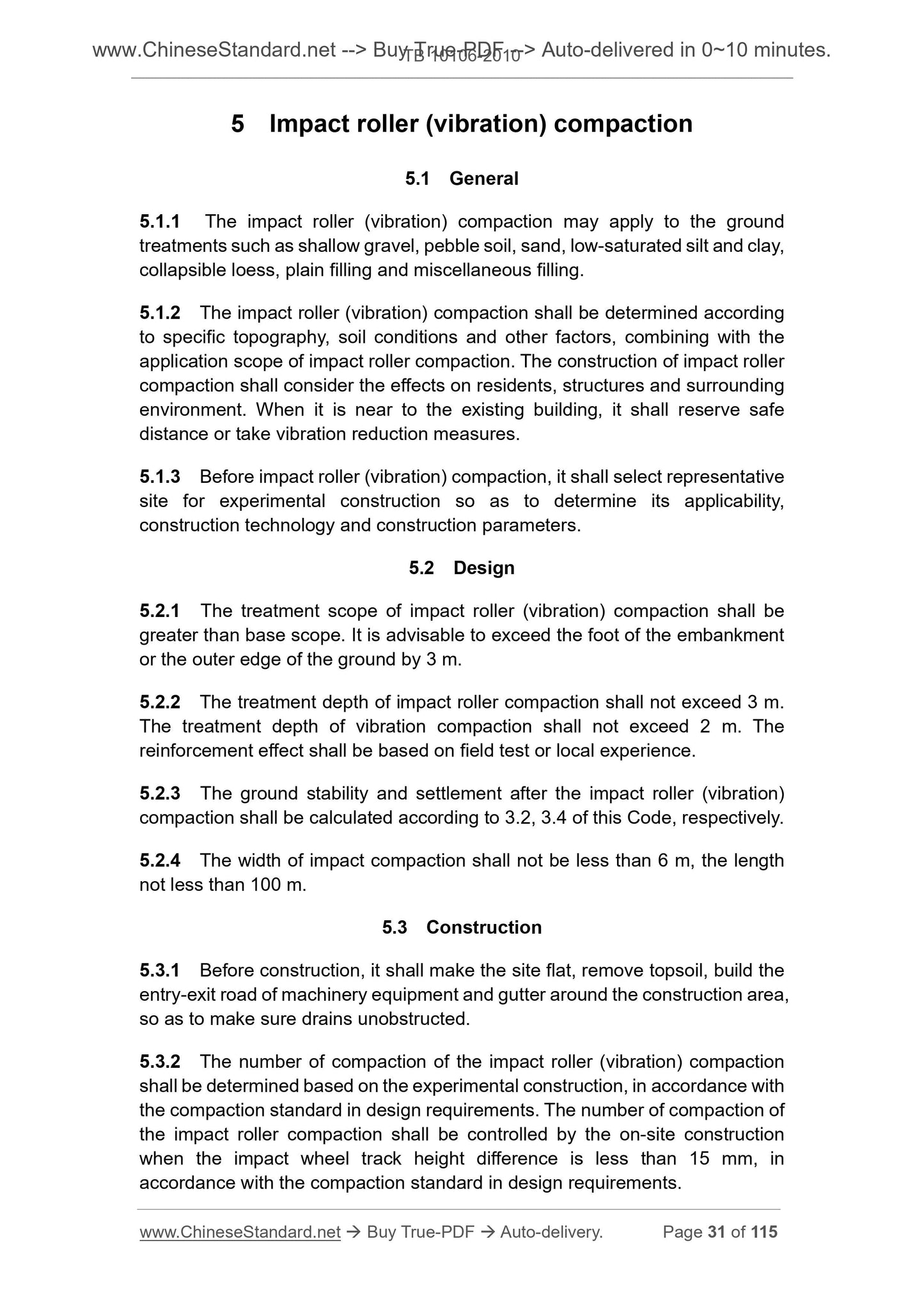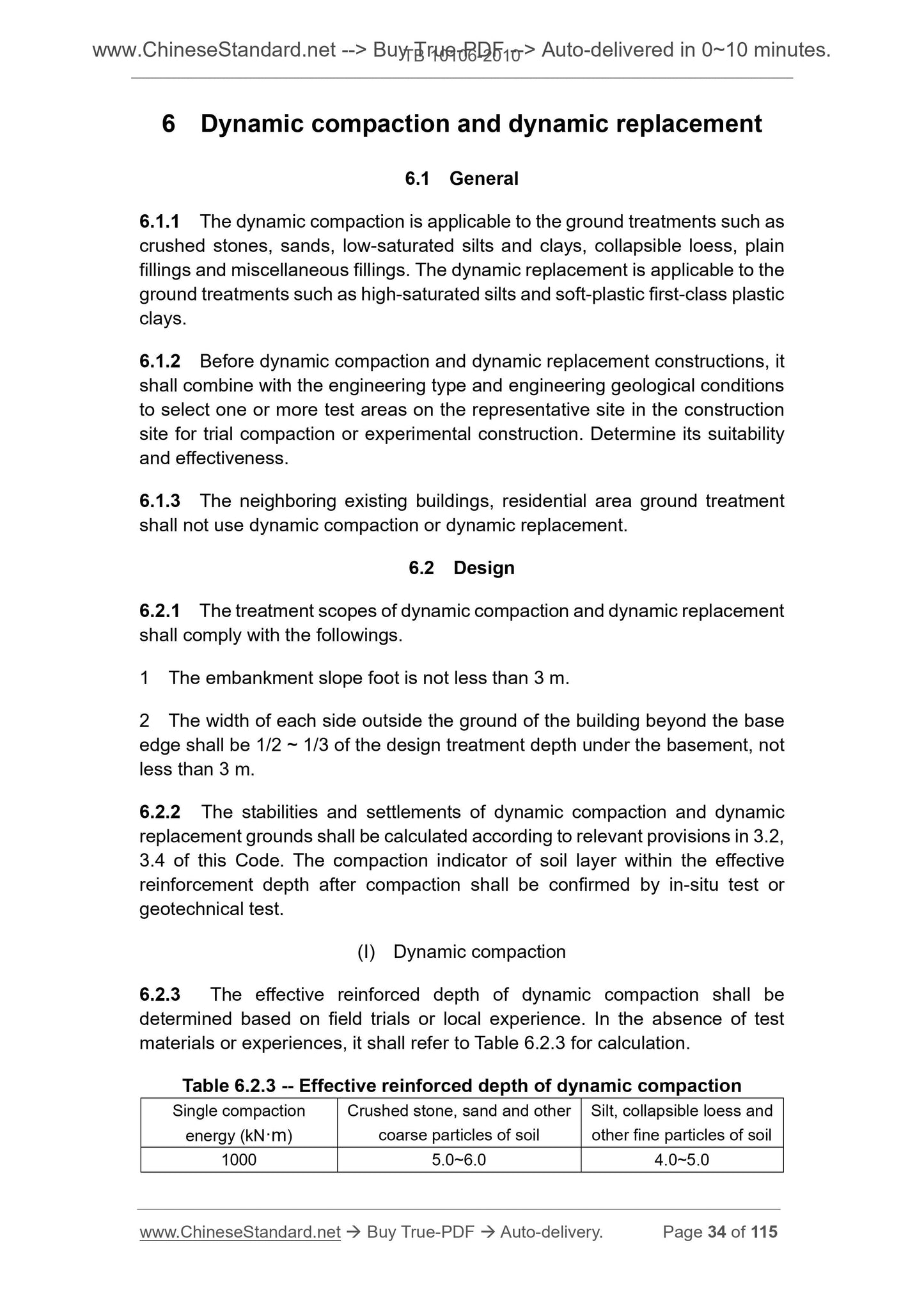1
/
of
12
www.ChineseStandard.us -- Field Test Asia Pte. Ltd.
TB 10106-2010 English PDF
TB 10106-2010 English PDF
Regular price
$490.00
Regular price
Sale price
$490.00
Unit price
/
per
Shipping calculated at checkout.
Couldn't load pickup availability
TB 10106-2010: Technical Code for Ground Treatment of Railway Engineering
Delivery: 9 seconds. Download (and Email) true-PDF + Invoice.Get Quotation: Click TB 10106-2010 (Self-service in 1-minute)
Newer / historical versions: TB 10106-2010
Preview True-PDF
Scope
1.0.1 This Code was formulated so as to unify the technical standards ofground treatment of railway engineering, make the ground treatment of railway
engineering comply with the requirements of safety, advanced technology and
economic rationality.
1.0.2 This Code is applicable to the design, construction and quality
inspection of ground treatment of railway engineering.
1.0.3 The ground treatment measures shall be reasonably determined based
on the railway level, settlement control standards, geological conditions,
environmental and construction period and other factors.
1.0.4 The ground treatment shall strengthen geological prospecting work, use
integrated exploration methods to obtain detailed information on engineering
geology, hydrogeology and environmental conditions.
1.0.5 The ground treatment design shall meet the stability and settlement
deformation control and other requirements.
1.0.6 The ground treatment shall pay attention to environmental protection,
taking full account of the terrain, hydrological conditions and other changes in
the surrounding environment, as well as the construction of temporary roads
and other temporary works on the railway stability and settlement.
1.0.7 The railway engineering demarcation department, sector with large
stratigraphic changes and junction of different ground treatment measures shall
take transitional ground treatment measures to reduce uneven settlement.
1.0.8 The construction of ground treatment shall be given priority as a control
project, according to the principle of “testing first before construction”. And
according to the construction, feedback information to optimize the construction
process and parameters.
1.0.9 The ground treatment construction methods and processes selected
shall consider the effects that the vibration, noise, dust and mud may have on
the environment.
2 Terms, symbols
2.1 Terms
2.1.1 ground treatment
a method of manual treatment of ground that is used to improve the ground
bearing capacity, and improve its deformation or permeability of nature
2.1.2 natural ground, natural foundation
a ground without manual treatment
2.1.3 composite ground, composite foundation
a ground treatment of which part of the soil is enhanced or replaced by the
formation of reinforcement, the load is born by the reinforcement and the
surrounding soil jointly
2.1.4 granular media material pile, granular column
a solid pile that is made of gravel, grit and other non-bonded bulk materials in
natural ground; it forms a composite ground with pile surrounding soil, such as
crushed stone pile, sand compaction pile, etc.
2.1.5 flexible pile
a pile body with certain bonding strength that is made of cement, lime and other
bonding materials mixing with soil in natural ground; it forms a composite
ground with pile surrounding soil, such as lime-soil (cement soil) pile, cement-
mixed pile and jet grouting pile
2.1.6 rigid pile
cement-fly-ash-gravel pile, plain concrete pile and RC pile with high bond
strength that are set in natural ground
2.1.7 ground allowable beating capacity
the maximum load that ensures that the ground does not produce shear failure
and instability, while ensuring that the building settlement does not exceed the
allowable value
2.1.8 ground basic bearing capacity
ground allowable bearing capacity when the width of the short side of the
building ground does not exceed 2.0 m and the depth of embedding does not
exceed 3.0 m
2.1.18 crushed stone pile, gravel pile
use vibration, impact or vibroflotation and other means to form a hole in the
ground; then crush the gravels into the hole that has been formed, so as to build
a dense pile of gravel, and a composite ground with pile surrounding soil
2.1.19 sand compaction pile
use vibration extrusion and other means to form a hole in the ground, so as to
make loose sands between piles crowded; extrude the sandstones into the
finished hole; build a composite ground with pile surrounding soil
2.1.20 lime-soil compaction pile
form a hole by using horizontal extrusion hole forming equipment so as to make
the soils between piles crowded; fill lime into the hole, tiered tamping; build a
composite ground with pile surrounding soil
2.1.21 soil cement compaction pile
form a hole by using horizontal extrusion hole forming equipment so as to make
the soils between piles crowded; fill lime into the hole, tiered tamping so as to
form a cement soil pile; build a composite ground with pile surrounding soil
2.1.22 pile thrusted-expanded in column-hammer
lift a column hammer to a high place to make it fall freely; impact it to form a
hole; then perform the tiered filling tamping to form an expanded pile body; build
a composite ground with pile surrounding soil
2.1.23 cement-mixed pile
use cement as the main agent of curing agent; through a deep mixing machine,
forcedly mix the curing agent and the ground soil so as to make soft soil hard
to form a monolithic, water-stable columnar reinforcement pile with a certain
degree of strength; build a composite ground with pile surrounding soil
2.1.24 jet grouting pile
high-pressure grout is sprayed from the horizontal nozzle through the drill pipe
to form a jet flow; the drill pipe is rotating while spraying; the ejected slurry cuts
the soil body; mix with soil to form a cement soil reinforcement pile
2.1.25 cement-flyash-gravel pile
mix cement, fly ash, gravel, stone chips, sand and other mixture with water so
as to form a high bond strength pile; build a composite ground with pile, soil
between piles and reinforced cushion
Basic Data
| Standard ID | TB 10106-2010 (TB10106-2010) |
| Description (Translated English) | Technical Code for Ground Treatment of Railway Engineering |
| Sector / Industry | Railway and Train Industry Standard |
| Classification of Chinese Standard | P65 |
| Word Count Estimation | 186,199 |
| Date of Issue | 2010-08-03 |
| Date of Implementation | 2010-08-03 |
| Older Standard (superseded by this standard) | TB 10113-1996 |
| Regulation (derived from) | Railway Construction (2010) 126 |
| Issuing agency(ies) | Ministry of Railways of the People's Republic of China |
| Summary | This standard applies to foundation treatment railway engineering design, construction and quality inspection. |
Share
